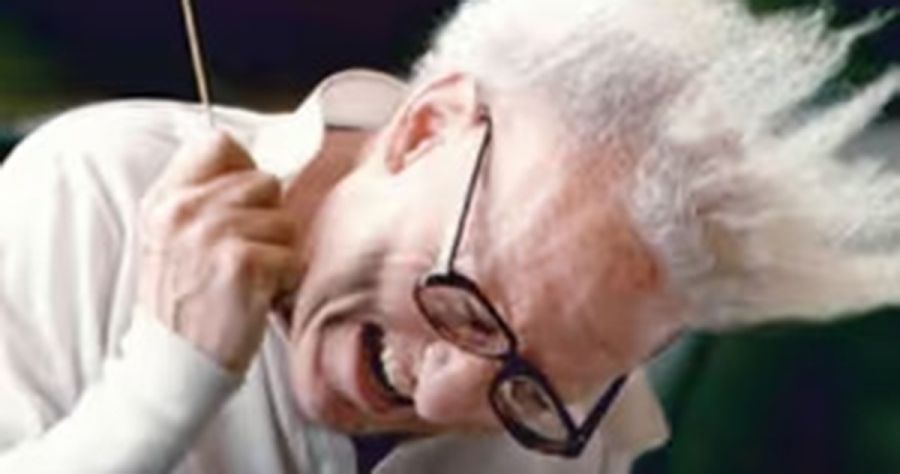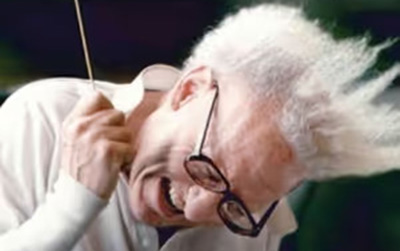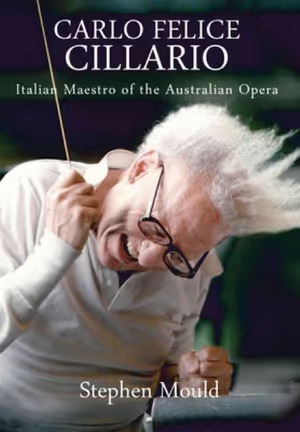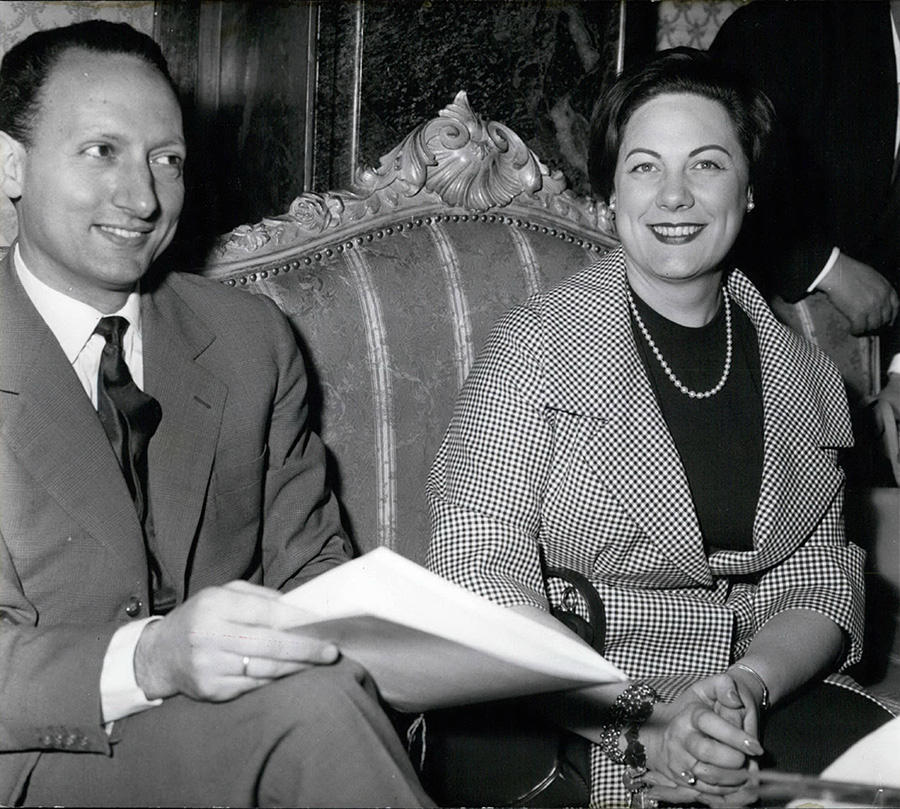
- Free Article: No
- Contents Category: Music
- Review Article: Yes
- Article Title: Ageless maestro
- Article Subtitle: One thousand nights at the opera
- Online Only: No
- Custom Highlight Text:
My first experience of Carlo Felice Cillario was in March 1969, when he conducted the Elizabethan Trust Opera’s production of Verdi’s Un ballo in maschera at Her Majesty’s Theatre, Melbourne. I had never seen the opera; nor had I heard of its conductor, whose triple-barrelled name was more indicative of a musical marking than something that belonged to an active musician. ‘Active’ was certainly the word: Cillario rushed into the pit and, afterwards, practically danced on to the stage, baton still in hand, to rapturous applause. In between, the actual performance was the first time I really connected to the compelling vivacity and innate drama of live opera. It helped immeasurably that the cast included the great Australian tenor Donald Smith as King Gustavus III. That night, all of it, still resounds in my mind.
- Featured Image (400px * 250px):

- Alt Tag (Featured Image): Michael Shmith reviews ‘Carlo Felice Cillario: Italian maestro of the Australian Opera’ by Stephen Mould
- Book 1 Title: Carlo Felice Cillario
- Book 1 Subtitle: Italian maestro of the Australian Opera
- Book 1 Biblio: Connors Court Publishing, $59.95 hb, 543 pp
- Book 1 Cover Small (400 x 600):

- Book 1 Cover (800 x 1200):

- Book 1 Readings Link: https://www.readings.com.au/product/9781923224278/carlo-felice-cillario--stephen-mould--2024--9781923224278#rac:jokjjzr6ly9m
Many years later, I interviewed Cillario as part of a Sunday Age series on creative figures aged seventy-plus. My first question, ‘Exactly how old are you?’, was almost the last. A crescendo of anguish was followed by a cadenza, delivered in Cillario’s trademark haphazard English in a gravel voice that sounded like a cross between Don Corleone and Lee Marvin (the italics are his, as spoken):
Oh, don’t speak about that because I run away. This has nothing to do with my enthusiasm for music. Don’t touch this question. It is like you are trying to hurt me. My mother was the same. She never talked about her age, her birthday, and she lived until she was eighty-six. I know myself, and I know if you remember how old I am I will be immediately fifty years older. That kills me. There are much more important things in life than that.
I speculated that Cillario must be seventy-five or more. I was out by a good ten years. Cillario was ninety-two when he died in Bologna on 11 December 2007, but he hadn’t planned on leaving quite so soon. As Stephen Mould notes in his exhaustive analysis of Cillario’s distinguished Antipodean career, the maestro, late in life, told his doctor he intended to live until he was one hundred. Moreover, he wished his centenary to be marked by a gala concert at the Teatro Colón, Buenos Aires, after which he would be ‘very glad’ to die. (Cillario was born in Argentina in 1915, of Italian émigré parents.)
Cillario spent more than a third of his allotted span conducting in Australia for the national company: from its titular Elizabethan beginnings, through its years as the Australian Opera, and into the Opera Australia age. He held at least seven successive titles and, between 1968 and 2002, conducted 1,020 performances of forty-one operas. These included Verdi, Puccini, and Rossini, his beloved Mozart, much Wagner, and such verismo pieces as Cavalleria rusticana and Pagliacci. Curiously, considering how many times he conducted ‘Cav & Pag’ across the world, the works were anathema to him: ‘If I was minister for culture in Italy … I’d like to burn the scores of all those verismo operas.’
The essential thing about Cillario, and what Mould’s book captures with admirable honesty and precision, is that for someone so professionally disciplined and exacting, his general approach to life was riddled with inconsistencies and contradictions. This duality affected him as man and musician; the two Cillarios resounding almost as one. He was, to be sure, a difficult man, and the book bristles with eccentricities and more than a few flashes of autocratic temperament. If a singer displeased him, Cillario, from the pit, would mime pulling a lavatory chain while holding his nose. The company’s longtime artistic director, Moffatt Oxenbould, described his old friend and occasional adversary as ‘a chameleon-like character … Sometimes he seems to be a wise old patriarch but the next moment he is like a mischievous little boy.’
Somehow, Cillario’s innate musicianship and scholarship always triumphed over personal peccadilloes. Certainly, as anyone who played for him in the pit or witnessed his performances from further back would attest, his performances possessed what was known as ‘the Cillario sound’. As Mould says:
Cillario brought all the facets of his personality to bear on his conducting: the wild ‘otherness’ of Argentina, the iron will and discipline of Toscanini; the rebellious streak, somehow governed by a higher authority of his own making: he would switch between these modes as the need arose, from one phrase to another sometimes back and forth over just a few bars. Discipline – wildness; authority – freedom; structure – extemporisation. Above all, Cillario made the orchestra sing.
There is no doubt that Cillario so loved Australia that he was more than willing, from his mid-fifties, to commit himself to a still-fledgling company far away from the international opera circuit in which he was already firmly established. Mould suggests this commitment reflected ‘the sense of adventure and restlessness which came to underpin [Cillario’s] life’.
 Carlo Felice Cillario and Renata Tebaldi in Munich, 1960 (Keystone Press/Alamy)
Carlo Felice Cillario and Renata Tebaldi in Munich, 1960 (Keystone Press/Alamy)
His enthusiasm, while it represented contentment and continuity, also included a streak of adventurous curiosity about his new-found land that manifested itself in various intriguing ways. For example, his ‘Pasta Cillario’, which included a sizeable dollop of Vegemite, was frequently served to friends, who largely did their best to avoid eating it. Of greater cultural worth was Cillario’s fascination with First Nations music that led him to spend a few weeks in 1979 on research trips to various Indigenous settlements. Somewhere in the family archives is his lengthy written account, Gli Aborigeni e loro bel canto (‘The Aborigines and their beautiful song’).
It is now almost a quarter of a century since Cillario last conducted in Australia: a farewell concert in his honour, at the Concert Hall of the Sydney Opera House, on 23 March 2003, after which he never returned to this country. Cillario’s story, particularly his crucial role in Opera Australia’s history, is well worth telling, and Mould, with his personal and professional knowledge of his subject and his milieu, is possibly the only person able to do it proper justice. As with Wotan, crossing into Valhalla, Mould can now proclaim, ‘Vollendet das ewige Werk!’.
While admirably thorough, the Cillario chronicle rivals Der Ring in length. There are thickets of footnotes, many of them containing full cast lists, which could easily have been combined into the list published later in the book. There are rather too many extracts from reviews. There are also ten appendices, including lists of Cillario’s Australian performances, his compositions, with music examples, his recordings as conductor and violinist, and an essay on legato. Something for everyone.
To balance the ledger, there are irresistibly vivid extracts (translated by Mould) from Cillario’s unpublished memoirs. Here, the Cillario voice is pre-eminent, offering wicked witticisms and warm recollections in equal measure on a variety of colleagues and subjects. Where else would you find in relatively close proximity Eva Perón, Benito Mussolini, Maria Callas, Montserrat Caballé, and Joan Sutherland, the latter referring to herself as ‘Io sono una vacca placida’ (‘I’m a placid old cow’). Later, Cillario takes us on a fantastic voyage through the interior of his original instrument, the violin. Let Cillario have the last word:
… it is simply a space destined to create impalpable sounds, a box that has not changed its shape for more than 300 years. It was created with minute precision to generate sound that emerges freely and is projected into space as soon as it is born.


Comments powered by CComment